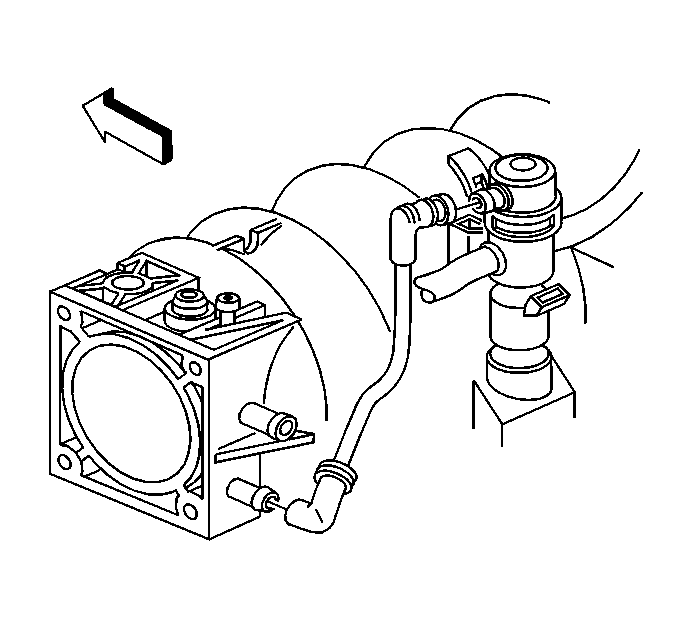Removal Procedure
Notice: Do not use compressed air to test or clean a fuel pressure regulator. Excessive air pressure can damage the fuel pressure regulator.
In order to prevent damage to the fuel pressure regulator, do not immerse the fuel pressure regulator in a cleaning solvent. Use only clean engine oil to lubricate the O-rings. In order to prevent damage to the fuel pressure regulator, DO NOT use any other type of lubricant.- Relieve fuel system pressure. Refer to Fuel Pressure Relief Procedure .
- Clean any dirt from the fuel pressure retaining ring.
- Remove the vacuum hose from the pressure regulator.
- Remove the retaining ring.
- Catch any spilled fuel using a shop towel.
- Lift and twist the fuel pressure regulator from the fuel rail socket.
- Cover the fuel pressure regulator housing to prevent contamination from entering the fuel system.
- Clean the fuel pressure regulator filter screen with gasoline.


Installation Procedure
Important: When servicing the fuel pressure regulator, insure that the O-ring backup, large O-ring, filter screen, and small O-ring are properly placed on the regulator.
- Install the new O-rings on the fuel pressure regulator, if a new fuel pressure regulator is not being installed.
- Insert the regulator into the fuel rail socket using a turning motion to properly seat the O-rings.
- Install the retaining ring.
- Install the vacuum hose to the fuel pressure regulator.
- Install the intake manifold top cover.
- Install the negative battery cable.
- Inspect for leaks.


Tighten
Tighten the nuts to 2 N·m (18 lb in).
Notice: Use the correct fastener in the correct location. Replacement fasteners must be the correct part number for that application. Fasteners requiring replacement or fasteners requiring the use of thread locking compound or sealant are identified in the service procedure. Do not use paints, lubricants, or corrosion inhibitors on fasteners or fastener joint surfaces unless specified. These coatings affect fastener torque and joint clamping force and may damage the fastener. Use the correct tightening sequence and specifications when installing fasteners in order to avoid damage to parts and systems.
| 7.1. | Turn the ignition switch ON for 2 seconds. |
| 7.2. | Turn the ignition switch OFF for 10 seconds. |
| 7.3. | Turn the ignition switch ON. |
| 7.4. | Check for fuel leaks. |
